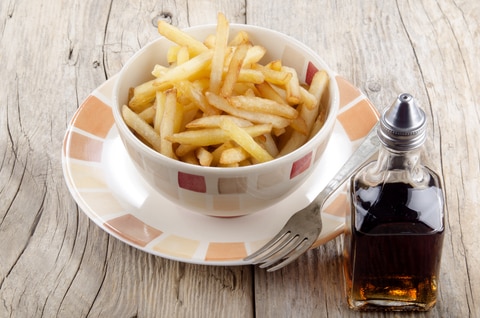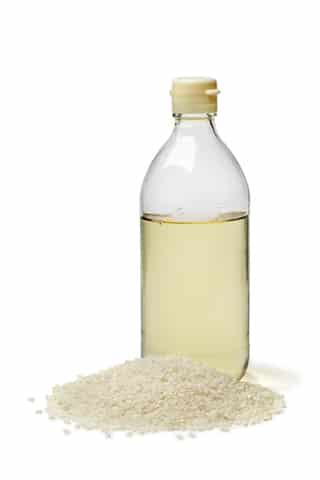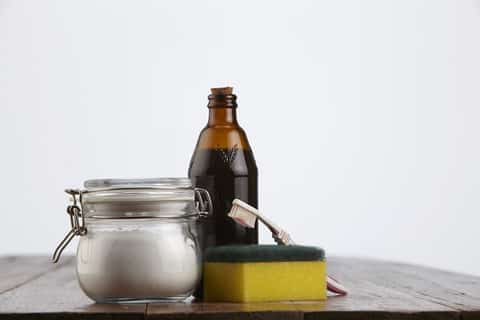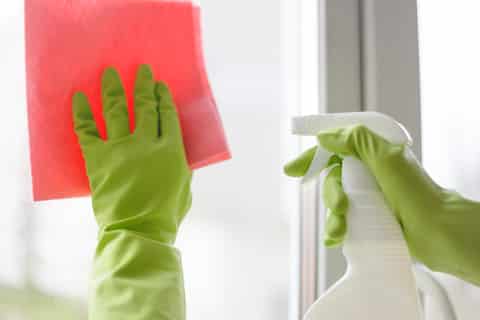
Vinegar is basically acetic acid. This acid is produced when bacteria are added to any type of alcohol. Each type of vinegar has its own flavor profile.
In this post, we’re going to be specifically looking at brown vinegar which is also known as malt vinegar. Both white, brown, and those in between are extremely useful both for cooking and cleaning.
We’re going to take you through exactly what brown vinegar is as well as some of its many uses.
What Is Brown Vinegar?
Types of vinegar
Apart from the color difference, there are differences in how the various kinds of vinegar are made, how they taste, and what they’re best used for.
All vinegar is made by fermenting alcoholic liquid of some description, whether it’s grapes, barley, or apples. This results in a sour liquid that is full of acetic acid.
- Brown vinegar
This is a derivative of barley-based beer making which is why it’s also known as “malt vinegar”. It is the vinegar of choice for sprinkling over traditional fish and chips.
White vinegar is probably the most common type found in most households. It has a sharp, pungent flavor and strong smell. It is usually distilled from grain.
This vinegar is best for pickling, zesty sauces, and balancing very sweet ingredients in recipes.
- Apple cider vinegar
This common vinegar is made with fermented apples. It is a lovely golden color with a tart but a fruity flavor that works well in salad dressings and chutneys.
It is said to have numerous health benefits.
- Balsamic vinegar
This classic Italian vinegar is more black than brown. It has become hugely popular in recent years thanks to celebrity chefs drizzling reductions of it on white plates.
This is the only kind of vinegar that isn’t made by fermenting alcohol. It is made in a similar way to wine – by pressing grapes then aging them in oak barrels. It is sweet and punchy in flavor, making it perfect for salad dressings.
- Rice vinegar
Rice vinegar is Asian in origin. It is made from fermented rice wine. It has a sweeter taste than many other vinegar types so it is useful for pickling vegetables or in Asian sauces, dressings, and stir-fries.
Now that you have an idea of the basic types of vinegar and how they’re made, let’s get back to the uses of brown vinegar.
Uses for brown vinegar
- This is the best vinegar to use on fish and chips along with a little salt.
- It is great for pickling vegetables like beetroot, onions, and most chutneys.
- Use it for red meat marinades.
- As with other vinegar, brown vinegar is good for gut health. It can destroy harmful bacteria in the gut which is probably why ancient Roman soldiers drank it to ward off dysentery. It is also useful for sore throats and urinary tract infections.
- Brown vinegar can be used as a general-purpose household cleaner. However, because it has a lower acidity, it is not as effective as white. Also, because it has an obvious color, it may stain fabrics so it’s best just used for household surfaces. Being a natural product, it does not contain the harmful chemicals that many other household cleaning products contain. Here’s how to use it around your home:
- Use it to remove limescale from the kettle or stains from your coffee pot. Simply dilute it 1:1 with water and leave it to soak for a couple of hours. Clean the appliance with a scouring sponge, rinse well, and you’re good to go.
- Use a mixture of brown vinegar, water, and a few drops of essential oil in a spray bottle to clean your windows. Polish with a microfiber cloth.
- Vinegar is great to add to the laundry for stain removal, odor elimination, and for keeping towels fluffy. Add a couple of tablespoons to the detergent before starting the wash cycle. This is especially useful when washing sweaty sports clothes.
- Mix brown vinegar in a 2:1 ratio and use it to wipe down your kitchen countertops. It is a natural anti-bacterial and can remove stains. Please note – do not use vinegar to clean marble or granite tops.
- Bathroom cleaning. A mixture of brown vinegar and salt can be used to remove limescale and other dirt from bathroom fittings like taps, showerheads, and baths. Make a paste, apply it, and leave it for a couple of hours. Then go back, wipe it off, and admire your shiny new bathroom! Put 2 cups of brown vinegar into the toilet and leave it overnight. This will remove stains and kill germs. Give it a quick brush in the morning.
In Conclusion
As you can see, it is worth stocking up your vinegar supply. It has so many uses around the house from cooking to cleaning and more.






